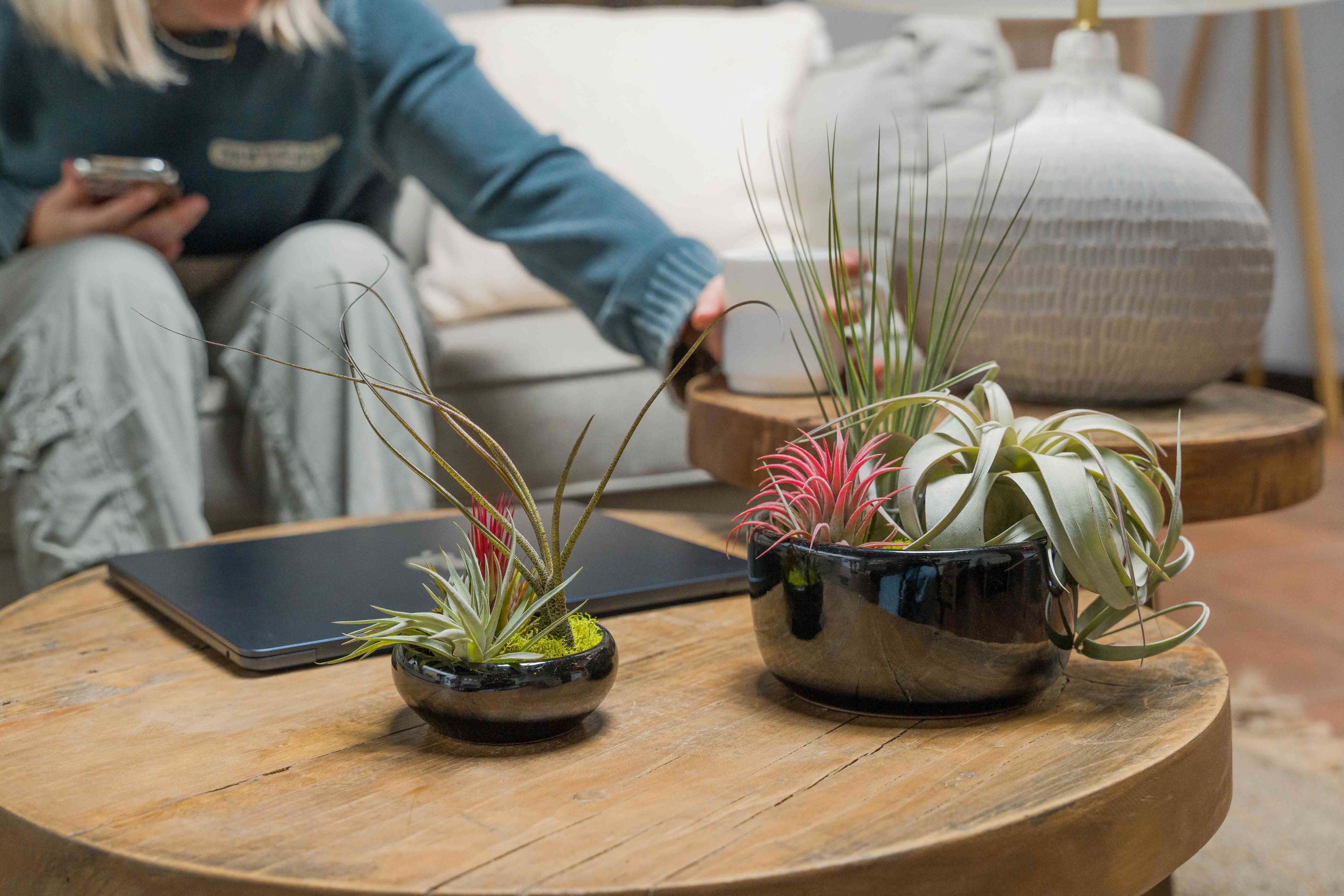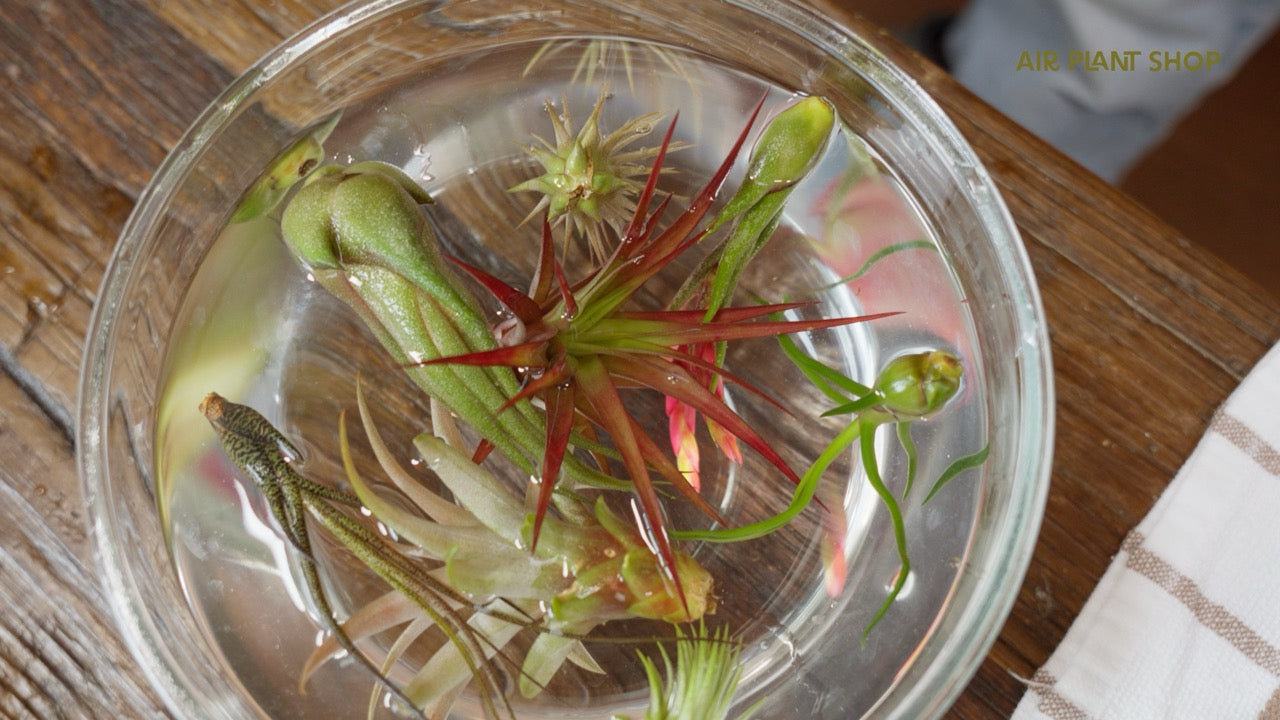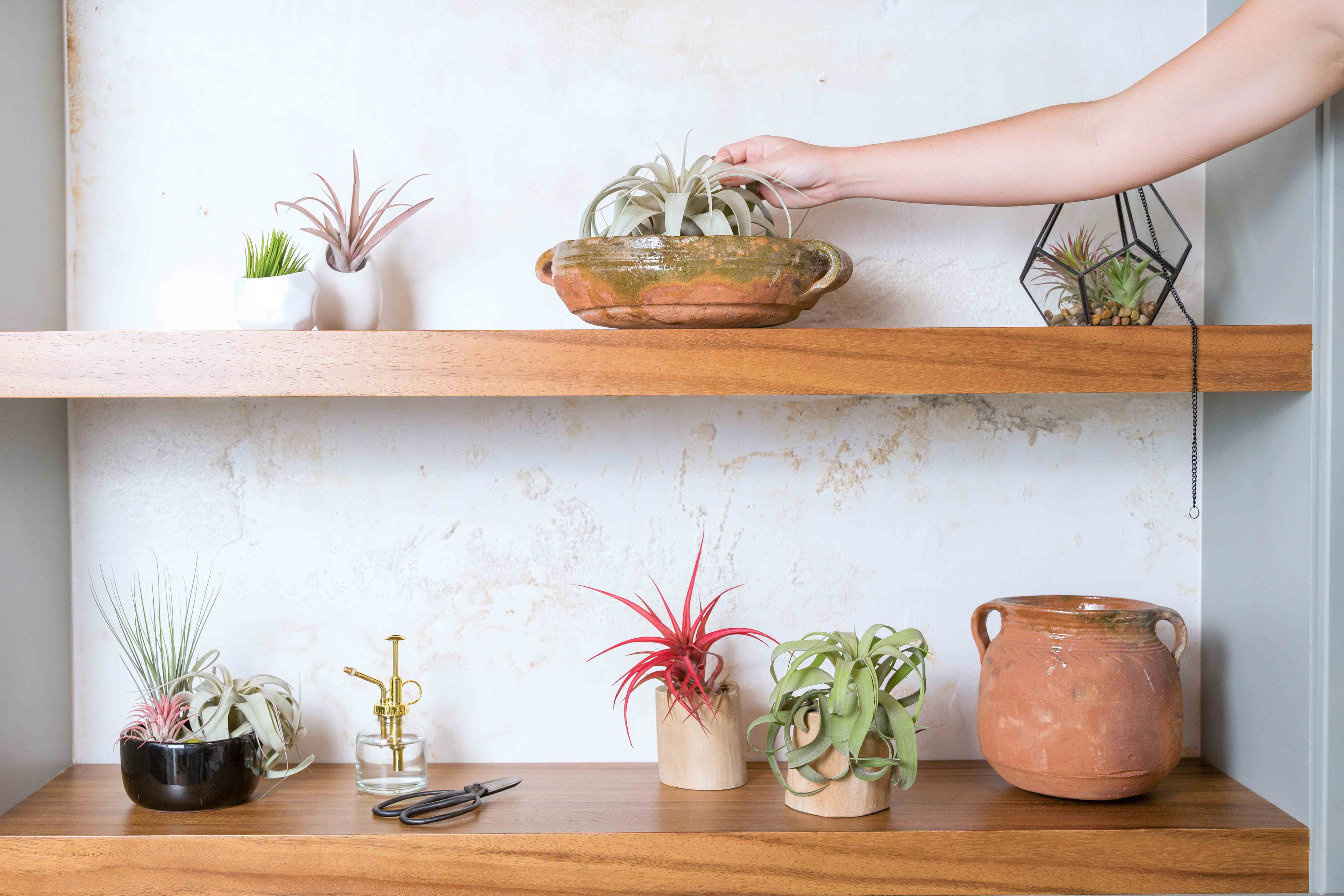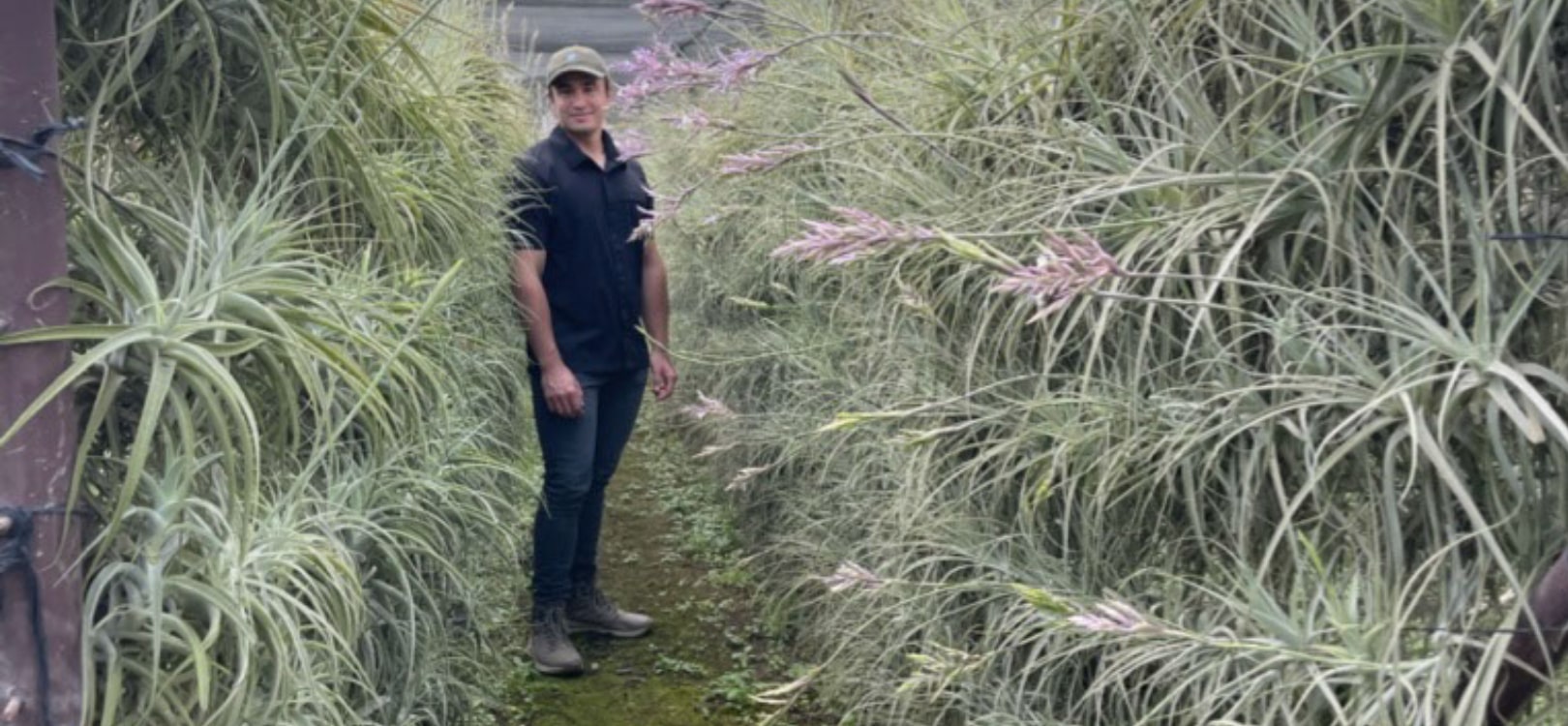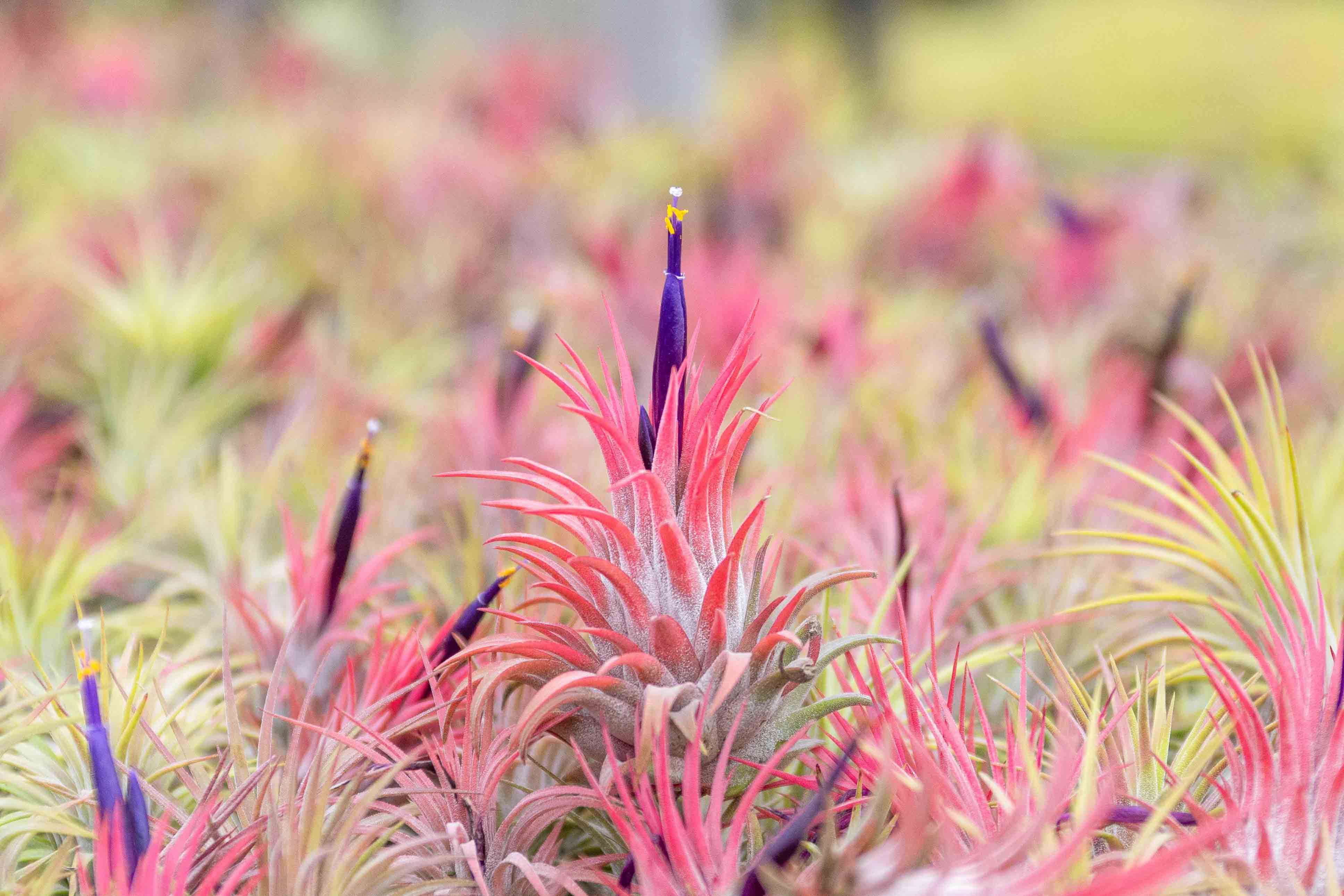See our Wholesale page for sets of 12 or more plants
Neoregelia Bromeliads for Terrariums, Vivariums and Collectors
A stunning and vibrant collection of small to medium-sized Neoregelia bromeliads, commonly referred to as "Neos". We have partnered with one of the world's leaders in bromeliad breeding and hybridizing to bring you a unique assortment of colorful varieties.
Neoregelias are compact, humidity-loving plants that are commonly used inside pet habitat enclosures for reptiles and amphibians, along with vivariums and terrariums. In frost-free climates, our Neos can be planted outside where they will quickly reach their mature size and form. Bright light is required to obtain the most rich coloration.
Our preorder packs are sold as a mixed assortment of off-sets, commonly called "pups". Each set of 5 will include a larger, medium-sized pup and 4 smaller pups. We will have over 10 varieties to select from, meaning every plant will be unique.
| Width | Height |
| 2-8 inches |
3-12 inches |
Free standard shipping included for pre-orders. Upgrade to FedEx for Only $15 at checkout.
Neoregelia Bromeliads: Origins & Uses
Neoregelia bromeliads are a striking genus of plants within the Bromeliaceae family, known for their vibrant colors and unique rosette form. Native to the tropical rainforests of South America—particularly Brazil—these epiphytic or terrestrial plants thrive in humid, shaded environments. The genus is named after Eduard August von Regel, a 19th-century Russian botanist, and encompasses around 100 recognized species, with countless hybrids and cultivars now in cultivation.
The origins of Neoregelia can be traced to the understory of tropical forests, where they have evolved specialized adaptations to survive in nutrient-poor environments. Most Neoregelia species are epiphytes, meaning they grow on other plants—primarily trees—without drawing nutrients from them. Instead, they absorb moisture and nutrients through their leaves, which form a central tank or cup that collects rainwater and organic debris. This natural reservoir also serves as a microhabitat for various organisms, including insects, frogs, and microorganisms, playing an essential ecological role in their native ecosystems.
Over time, Neoregelia bromeliads gained popularity among horticulturists and plant enthusiasts due to their compact size, bold coloration, and relatively low maintenance needs. Unlike other bromeliads that produce showy flower spikes, Neoregelias are valued more for their vividly patterned and colored foliage. The leaves can display a range of colors, including green, red, purple, yellow, and pink, often with spots, stripes, or central blushing when the plant is ready to bloom. The inflorescence itself is small and emerges from the central tank, often partially hidden by the rosette of leaves, but it is the foliage that typically steals the show.
Today, Neoregelia bromeliads are widely cultivated as ornamental plants both indoors and outdoors. In tropical and subtropical regions, they are often used in landscaping to add texture and color to shaded gardens, rockeries, or as ground cover under tree canopies. In cooler climates, they are grown as houseplants or in greenhouses, where they are appreciated for their exotic appearance and ability to thrive in containers.


Aside from their ornamental use, Neoregelia species contribute to biodiversity and environmental health in their natural habitats. Their water-holding rosettes support a diverse array of life and can even serve as natural mosquito control by providing a breeding ground for predator insects that feed on mosquito larvae. Furthermore, their ability to grow without soil and minimal watering makes them ideal candidates for vertical gardens and eco-friendly interior design solutions.
Neoregelia bromeliads are a captivating group of plants with origins in the lush rainforests of South America. Their adaptability, aesthetic appeal, and ecological significance have made them a favorite among gardeners, landscapers, and conservationists alike. Whether grown in the wild or as part of a curated plant collection, these bromeliads continue to fascinate with their vibrant beauty and remarkable resilience.
How to Use Neos

In Vivariums and Pet Enclosures
Neoregelias are popular in pet vivariums and enclosures, especially for reptiles and amphibians, due to their compact size, durability, and water-holding rosettes. These plants provide natural shelter, climbing surfaces, and microhabitats that help maintain humidity and support hydration, particularly for species like dart frogs. Their vibrant foliage adds aesthetic appeal while mimicking tropical environments. Neoregelias are epiphytes, making them ideal for mounting on backgrounds or branches in bioactive setups. Easy to care for and resilient under artificial lighting, they contribute to a healthy, enriching habitat, benefiting both the animals and the overall ecosystem of the enclosure.

As a Landscape Plant In Tropical Climates
Neoregelia are widely used in landscaping, particularly in tropical and subtropical regions, for their vibrant foliage and low-maintenance requirements. Their rosette form and striking color variations—ranging from red and pink to purple and green—add texture and visual interest to gardens, especially in shaded or under-canopy areas. Neoregelias are ideal for use as ground cover, in rockeries, or as accent plants around trees, as they thrive in humid environments and can withstand drought once established.

To Add Color to Your Plant Collection
Neoregelia bromeliads add striking color to any plant collection with their vibrant, variegated foliage in shades of red, pink, purple, and green. Their rosette form and unique patterns make them eye-catching focal points, creating contrast and depth. Their compact size, humidity tolerance, and low-maintenance nature make them ideal for creating lush, tropical microhabitats in enclosed spaces like indoor terrariums and vivariums.
FAQs
After shipping, it's important to soak your Neoregelia bromeliad in water for about 2-3 hours to help it recover from any stress it may have experienced during transit. Shipping can cause the plant to become dehydrated, and soaking helps rehydrate the leaves and central rosette, which is essential for the plant's overall health.
Once soaked, place the Neoregelia in an area with high humidity. Neoregelias are native to tropical environments and thrive in humidity levels of 50-70%. Whether you're in a tropical climate or growing the plant indoors, it's crucial to maintain these conditions. In tropical areas, you can place the plant outside in a shaded spot, where natural humidity will support its growth. If you're growing Neoregelias inside, consider placing them in a humidity-friendly environment like a bathroom, a terrarium, or a pet enclosure with proper ventilation.
In pet enclosures, like those for reptiles or amphibians, Neoregelias work well because the elevated humidity levels mimic their natural habitat. If you're growing the plant indoors in a dry area, you might want to use a humidity tray or regular misting to maintain the moisture they need.
Neoregelia bromeliads and Tillandsias (air plants) have distinct care needs. Neoregelias require their central rosette to be filled with water, thrive in high humidity, and are typically planted in well-draining soil. They need bright, indirect light and benefit from light fertilization. In contrast, Tillandsias absorb water through their leaves, needing soaking or misting, and require no soil. They are more tolerant of drier air but still prefer humidity and bright, indirect light.
It’s important to note that while Neoregelia bromeliads are often planted in soil for convenience, they don't actually require it to thrive. Like Tillandsias (air plants), Neoregelias are epiphytic by nature, meaning they can grow on other surfaces such as trees, rocks, or even mounted on wood or decorative materials. In their natural habitat, they absorb moisture and nutrients through their leaves, not their roots.
When grown epiphytically, Neoregelias simply need to be securely anchored on a surface, and their central rosette should be kept filled with water. They will thrive as long as they receive adequate light, moisture, and humidity, even without being in soil. This makes them versatile and ideal for creative displays in terrariums, hanging arrangements, or as part of vertical gardens, much like Tillandsias.
So, while soil is an option, it's not necessary for their care and growth.
To improve the coloration of Neoregelia bromeliads, provide bright, indirect light, maintain warm temperatures (65-85°F), and ensure high humidity (50-70%). Regularly change the water in the rosette and use diluted fertilizer during the growing season. Slight nighttime temperature drops can also enhance vibrant colors, especially red or pink hues


